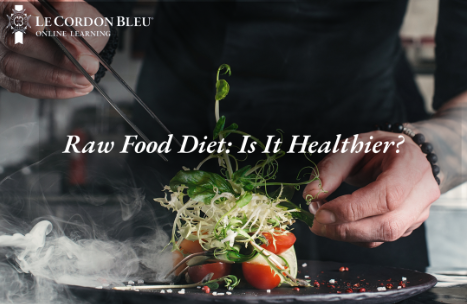
In today’s world of artificial flavors and often ingredients with names that are difficult to pronounce, more consumers are taking a more natural approach to food and diets Often called a “clean” way to eat and what could be more natural and cleaner than eating everything raw?
In its strictest form, raw food diet means eating entirely made up of raw, unprocessed foods. Raw veganism is the most common form of the diet, but you can also consume raw, unprocessed animal products, including fish, eggs, meat, and milk.
What You Can Eat and What You Can'tMany people who follow the raw food diet eat only plant-based foods, making it a type of vegan diet. However, eating raw animal products or raw or dried meat can also be included in a raw food diet.
The following foods are suitable for most raw food diets:
- raw fruits and raw vegetables
- dried fruits and vegetables
- freshly made fruit and vegetable juices
- soaked and sprouted beans, other legumes, and grains
- raw nuts and seeds
- raw nut butters, such as peanut butter and almond butter
- nut milks, including almond milk
- coconut milk
- cold-pressed olive oil or coconut oil
- nutritional yeast
- seaweeds
- dried fruits
- green food powder, such as dried wheatgrass or algae
- fermented foods, including kimchi and sauerkraut
- purified water,
- other organic, natural, or unprocessed foods
What to avoid:
- Cooked fruits, vegetables, meats and grains
- Refined sugars and flour
- Roasted nuts & seeds
- Refined oil
- Pasteurized products such as juices and dairy
The BenefitsThe benefits of a raw food diet are associated with the type of foods the diet recommends. However, these benefits can be achieved by incorporating these foods into a balanced diet that includes all food groups.
A 2019 review reports that following a raw plant-based diet has significant benefits for physical health and disease.
Following a raw food diet can have a range of benefits, including improved health and weight loss.
Which is healthier? Raw or cooked?The answer is both. Research shows both cooked and raw foods are good for you, and nutritional value varies by food and preparation method.
How to prepare raw foods?A raw food diet contains a lot of foods you’re likely familiar with and consider nutritious choices, including fruits, vegetables, nuts, seeds, sprouted legumes, sprouted grains, and fermented foods. However, you must get creative and careful to avoid getting unwanted mistakes in eating and preparing raw foods.
Le Cordon Bleu Online Learning provides an in-depth, and hands-on, introduction to preparing and eating raw food, with a focus on the history, uses, nutrition, health claims and the ethical and sustainable benefits. Check it out here:
Raw Food EssentialsFinal Word
There’s no doubt that raw foods bring nutrition, complexity, and variety to snacks and meals — you need them to have a healthful diet. But the way you prepare and eat it is a crucial part of this diet
